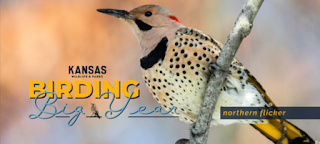A lot of places are struggling about where to draw the line between fair fishing and hunting methods and unfair. Electronics are making the dividing line even more difficult to find. With the advent of drone tech and the usage of advanced electronics in the fishing industry, state organizations are searching for fairness to be able to allow fair methods and still conserve natural resources. This innovative project in Kansas is an example of these efforts.
For more information about the outdoors in Kansas and elsewhere, visit Family-Outdoors
KDWP Fisheries Staff Test Latest Technology in Ground-breaking StudyEMPORIA – Many advances in technology arise out of a desire to improve output and efficiency, and the fishing industry is no exception. One such advancement that has many anglers “picking sides” is the introduction, and proliferation, of live-imaging sonar (LIS) – sonar that allows anglers to view fish and structure, below and around their vessel, in real time and often with great clarity. While some believe LIS adds immense value to the overall fishing experience, others believe it poses an ethical dilemma, blurring the lines of “fair chase.” So, when is an advancement too advanced? That’s the data KDWP Fisheries staff sought but couldn’t find; so, they developed it themselves in a first-of-its-kind study.
“As a conservation-based organization, we always want to look to science and ask ourselves, ‘What is the data telling us?’” said KDWP Fisheries biologist, Ben Neely. “But this technology is just new enough, that these data really didn’t exist. That’s when we decided we needed to explore this further and develop the study. It’s taken off like wildfire in the conservation community ever since.”
KDWP Fisheries staff opted to conduct a controlled and replicated experiment to assess the influence of LIS on catch of winter crappie – Kansas’ second-most sought-after sportfish. Specifically, the project was designed to examine LIS impacts on “casual weekend anglers” fishing unfamiliar water on a weekend trip.
In early December 2021, a total of 32 individuals from KDWP’s Fisheries and Wildlife divisions, and Kansas State University took part in a two-week experiment at Cedar Bluff Reservoir. Anglers were randomly partnered up and instructed to fish for seven hours on either the north or south sides of the lake, and either with or without the aid of LIS. The next day, each team switched sides and use of equipment; This resulted in a total of 16 controlled “samples.” The results were unexpected.
Participating anglers who did not use LIS averaged 6.3 crappie per day, while anglers who used LIS caught 7.3 crappie per day.
When other species of fish were counted in the study, teams not using LIS averaged 12.9 fish per day, compared to 14.4 per fish per day when LIS was used.
And, anglers also caught slightly larger crappie on average (10.8 inches) when using LIS, compared to the fish (10.5 inches) caught by anglers not using LIS.
Ultimately, the data collected demonstrated that while LIS may improve angler catch and size of crappie by casual weekend anglers, overall differences were statistically minimal. And maybe more importantly, the data suggests an overall low risk of long-term damage to crappie populations as a result of LIS. However, anglers with more experience and expertise using LIS to target crappie were not considered in this study. Future studies are being discussed that can leverage the abilities of more LIS-experienced anglers to further inform future management of crappie in Kansas.
“Balancing sociological needs with biological needs is at the heart of nearly everything we do at KDWP,” said KDWP Secretary Brad Loveless. “This study is a fine example of how our staff continue to operate off of the best-available data to make science-based decisions that benefit not only the resource, but our users. I’m confident this study will be just one of many that the conservation industry looks to, as our talented staff in Kansas continue to pave the way in fisheries research and management.”
To learn more about this study, watch an audio/video presentation by Neely here, https://youtu.be/XEiP0_PMjjg.
For more on fishing in Kansas, visit ksoutdoors.com/Fishing.


